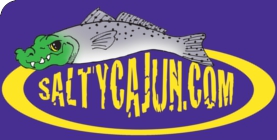


 |

|

|
|
#1
|
|||
|
|||
|
|
|
#2
|
||||
|
||||
|
Dang, not good at all.
|
|
#3
|
||||
|
||||
|
From where?
On another site they are saying they are finding some dead deer in the Lacassine, Cameron Prairie NWR's |
|
#4
|
||||
|
||||
|
Looks pretty rough.
|
|
#5
|
|||
|
|||
|
Dang that looks bad
|
|
#6
|
||||
|
||||
|
put out some food..
|
|
#7
|
|||
|
|||
|
This is close to Gary's Landing. I was told they have found 5 on refuge so far. A couple more in Cameron. We found a young one floating muddboat run last month. Makes you wonder about eating deer this year. I have lots of other deer on camera with this being the only sick looking one.
|
|
#8
|
||||
|
||||
|
Bad looking deer, but an excellent looking photo from a trail cam.
|
|
#9
|
||||
|
||||
|
Feed that thing!!
|
|
#10
|
|||
|
|||
|
Top. It's not a feed problem. Marsh is cover with food.
|
|
#11
|
||||
|
||||
|
Call the Lake Charles LDWF office and speak with the private lands biologist there. There have been some outbreaks of blue tongue disease in SE LA and may have some over there that they may need to know about if they don't already and he may have an explanation
|
|
#12
|
||||
|
||||
|
Quote:
|
|
#13
|
||||
|
||||
|
What's blue tongue disease??
|
|
#14
|
||||
|
||||
|
Idk what it is but the guys at nibblets been killing some deer in the cage bc of that
Last edited by CaptainBG; 10-13-2012 at 01:17 PM. |
|
#15
|
|||
|
|||
|
Wildlife guys saying its blue tongue going around. Spread by nats.
|
|
#16
|
||||
|
||||
|
Does it help to remove the infected animals from the herd??
|
|
#17
|
||||
|
||||
|
Bluetongue is an insect-borne, viral disease primarily of sheep, but it occasionally goats and even white-tailed deer. The disease is non-contagious and is only transmitted by insect vectors, especially during periods of drought. The disease is actually caused by a virus belonging to the family Reoviridae.
Species That Can Be Affected As mentioned, this is primarily a disease of sheep but other species such as goats, cattle, buffalo, antelope and whitetail deer can be infected. Don’t worry, humans can not be infected. Distribution of Blue Tongue The virus is present in the United States, so any area can potentially harbor the virus. However, outbreaks typically occurs repeatedly in areas where it has occurred before and especially during dry conditions. Key Signs To Look For Characters of disease include fever, widespread bleeding of the oral and nasal tissue, excessive salivation, and nasal discharge. In acute cases the lips and tongue will become swollen and this swelling may extend below the lower jaw. Lameness, due to swelling of the cuticle above the hoofs and emaciation, due to reduced feed consumption because of painful inflamed mouths, may also be symptoms of this disease. The “blue tongue” that actually gives the disease its name occurs only in a small number of cases. How Blue Tongue is Spread The virus cannot be transmitted between susceptible white-tailed deer without the presence of insect carriers. The incidence and geographical distribution of bluetongue depends on seasonal conditions, the presence of insect vectors, and the availability of the density of deer. The insect carriers, biting midges, prefer warm, moist conditions and are in their greatest numbers and most active after it rains. Life of the Blue Tongue Virus Bluetongue virus does not survive outside the insect vectors or susceptible hosts. Deer carcases and products such as meat and hide are not a method of spread. Survival of the virus within a location is dependent on whether the vector can over winter in that area. Controlling Blue Tongue Within a wild population of deer, there is not much that can be done. With domestic animals, you can use a combination of quarantine and movement controls to prevent spread and reduce transmission and protect susceptible animals. As with just about every disease, less animals will become infected under lower densities. |
|
#18
|
|||
|
|||
|
The Deer herd in the upper part of the Atchafalay river basin was hit with Blue Tongue out break back in 2005. The Deer population was really hunt for a few years after that.
This Deer probably was a victim of Blue Tongue. Picture taken Sept. '05. I found another dead Deer in the water a couple weeks later. |
|
#19
|
||||
|
||||
|
that's a pretty butterfly, Gerald!
|
|
#20
|
|||
|
|||
|
Somebody get that deer a sammich
|
 |
| Bookmarks |
|
|
